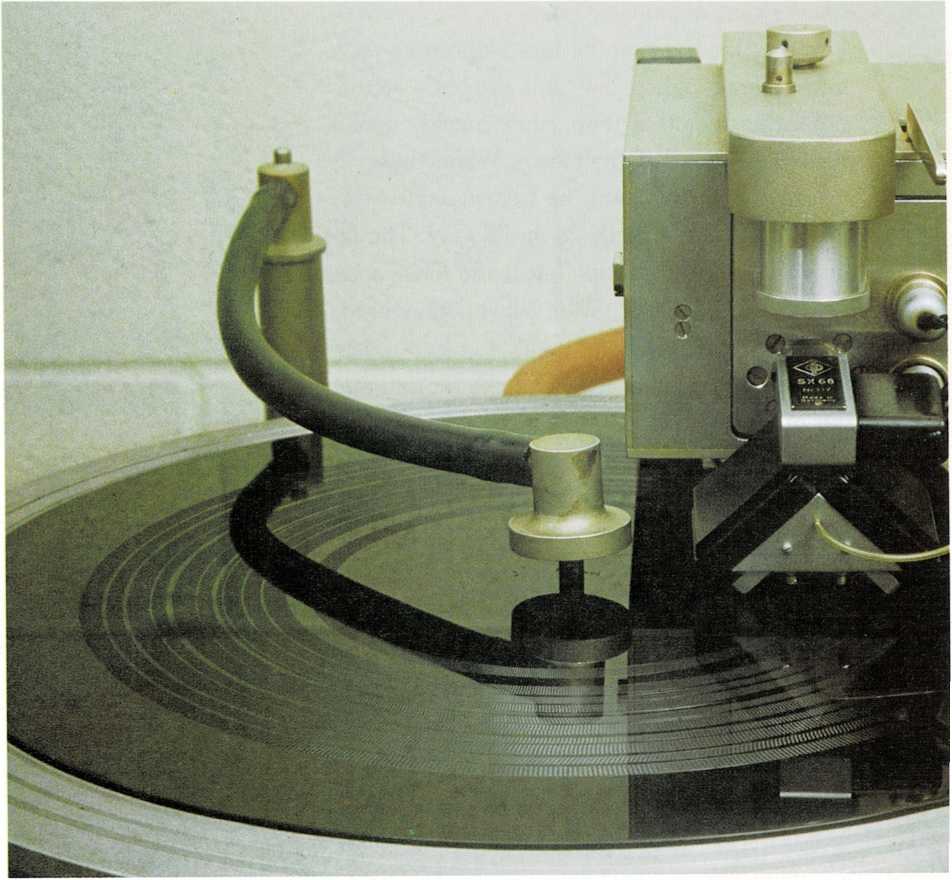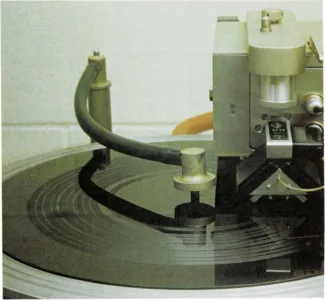Putting sound to work
What makes sounds like a violin, a singer, and a big brass band? A
phonograph, of course. It makes the sounds you hear from the records you
play.
This machine is cutting the sound grooves in a blank record. Thousands
of copies will be made from this record.

A phonograph record is made the same way it’s played—with a needle.
The needle is used to cut the long, winding groove in the surface of the
record.
When the record is made, the microphone changes the sound vibrations
into patterns of strong and weak electric signals. The signals are sent
to an electromagnet next to the record-cutting needle. There they make
strong and weak pulls—and the pulls make the needle vibrate. So as the
record turns, the needle cuts a groove with a wiggly pattern exactly
like the vibrations in the sound.
When you play a record, the phonograph changes the pattern back into
sounds. The wiggly groove makes the record needle vibrate. The vibrating
needle makes an electromagnet give off patterns of electric signals. The
strong and weak electric signals make the phonograph speaker
vibrate—and you hear the sounds.
Stereophonic records are made in the same way—but the record-cutting
needle copies two kinds of sounds at once. Two electromagnets make the
cutting needle vibrate in two different directions and cut different
wiggles in each side of the groove.
When you play the stereo record, the needle picks up both sets of
wiggles. It sends one set of signals to each speaker—and your ears
hear two slightly different sounds that make the music seem \”real.”

